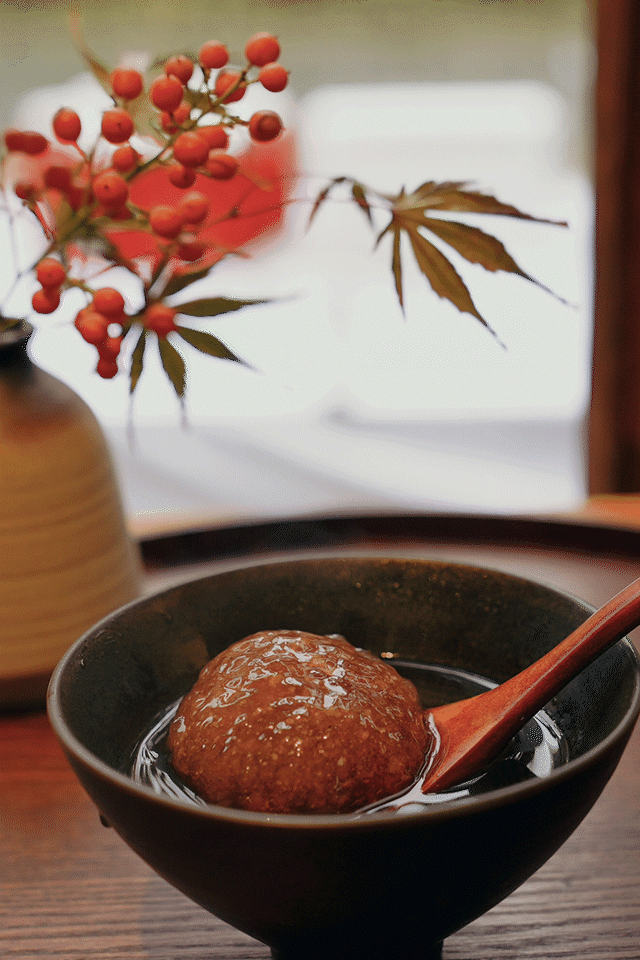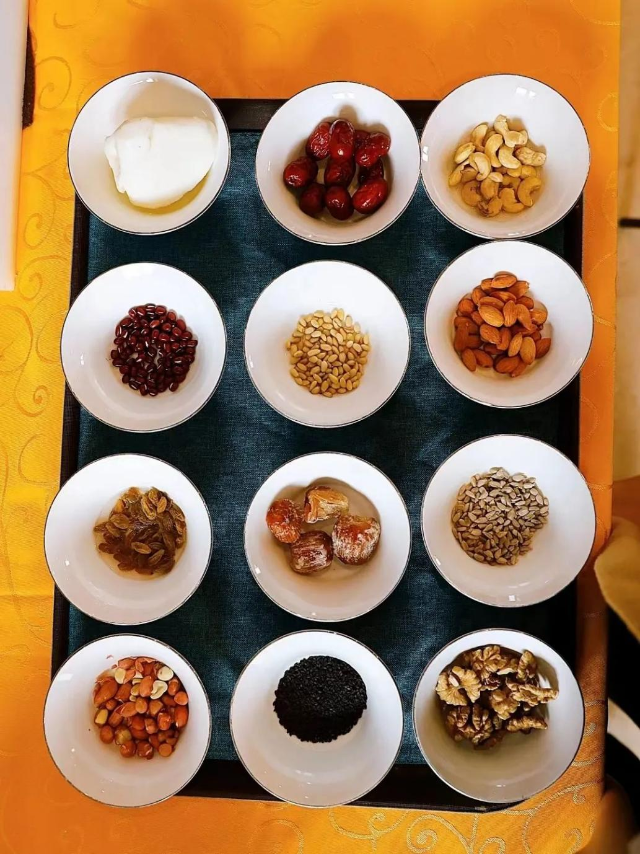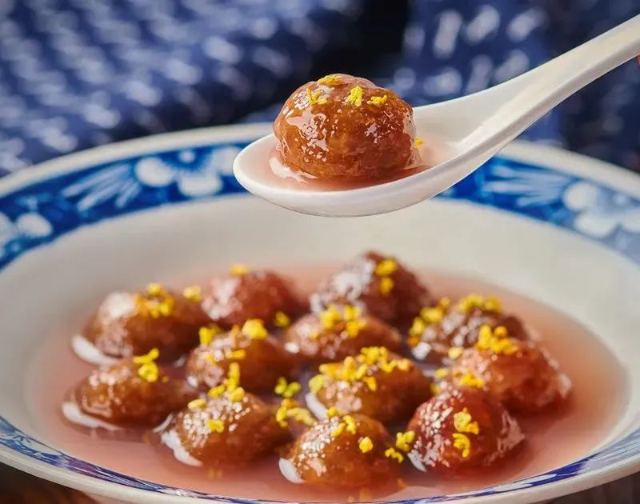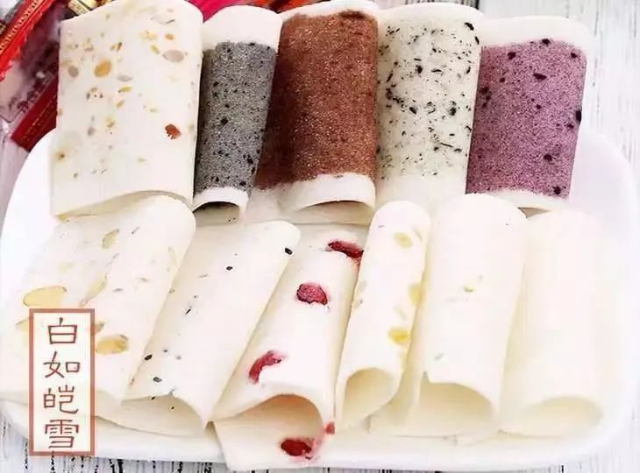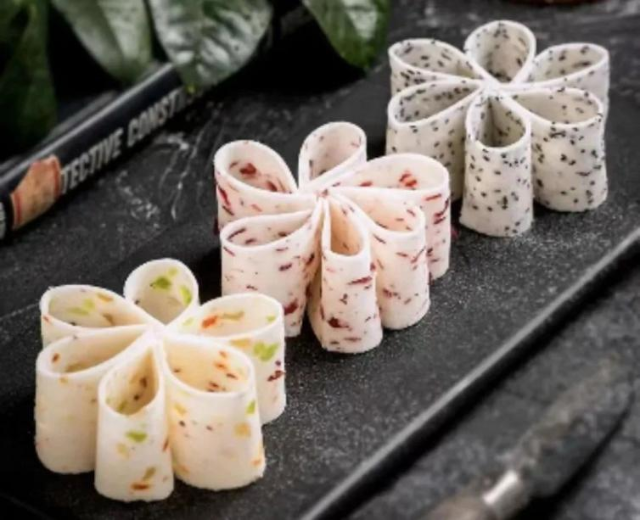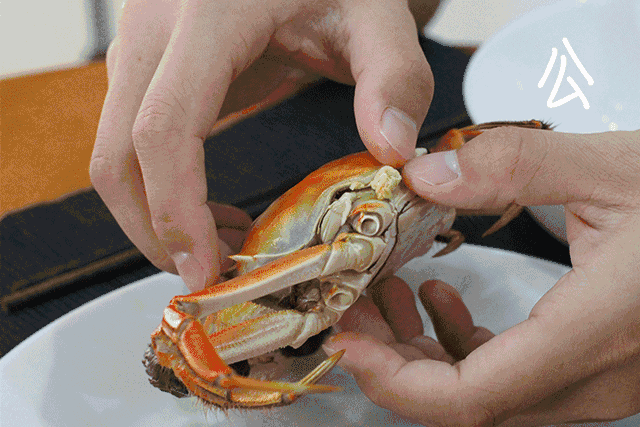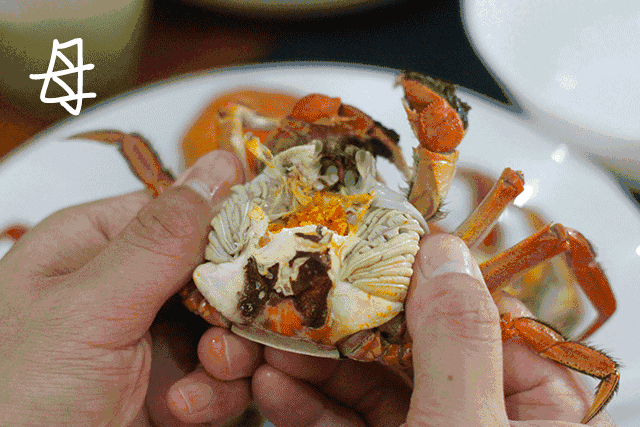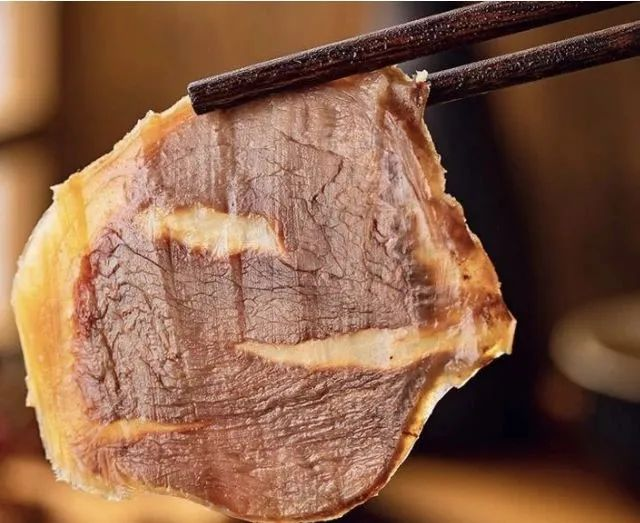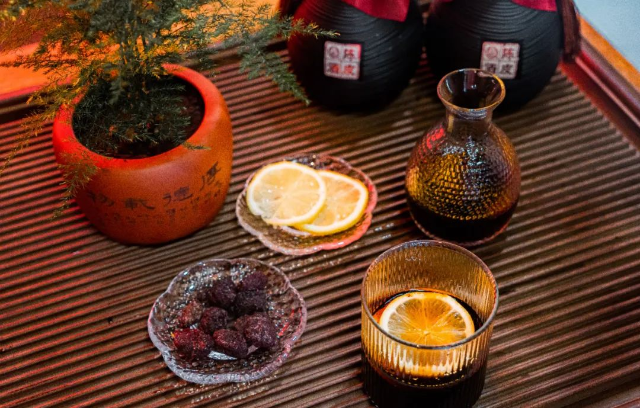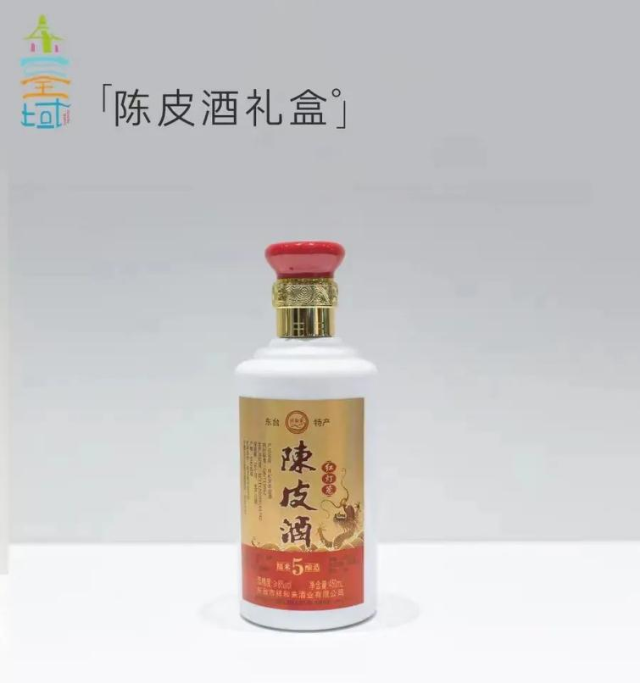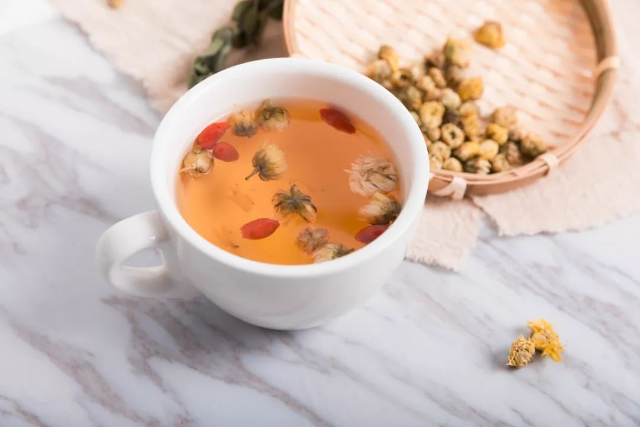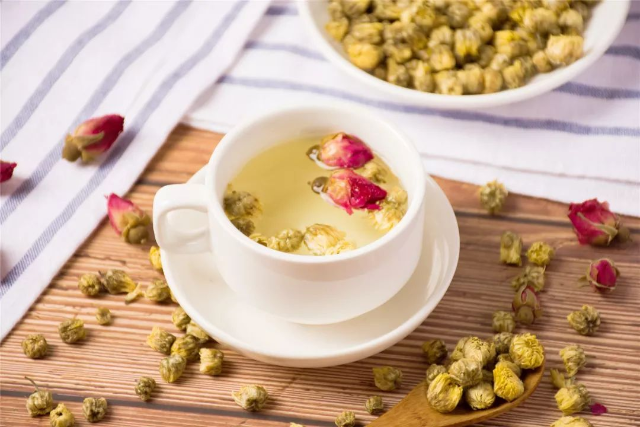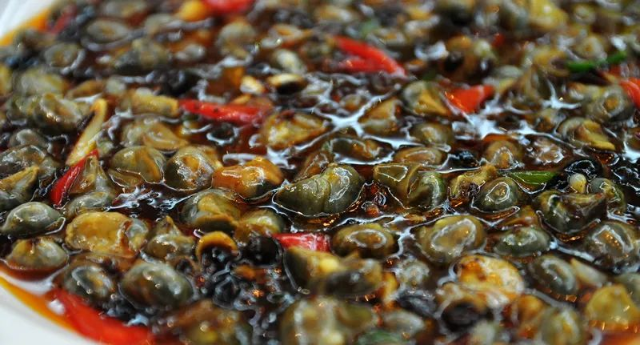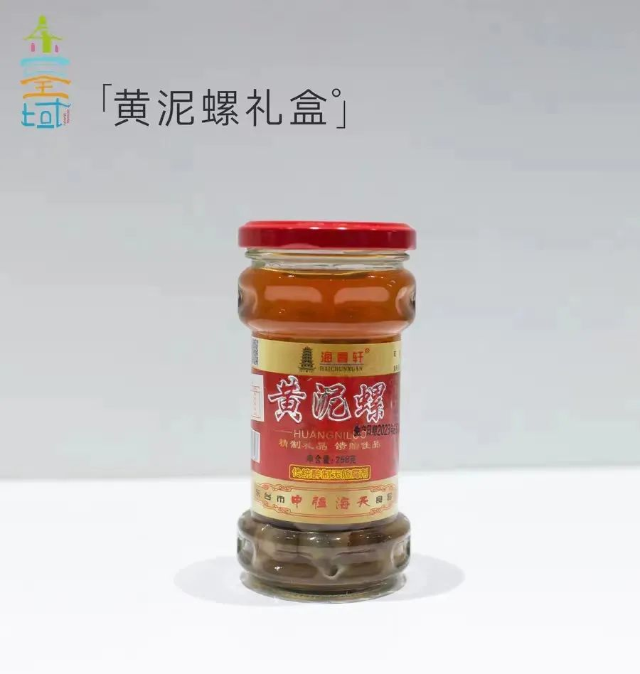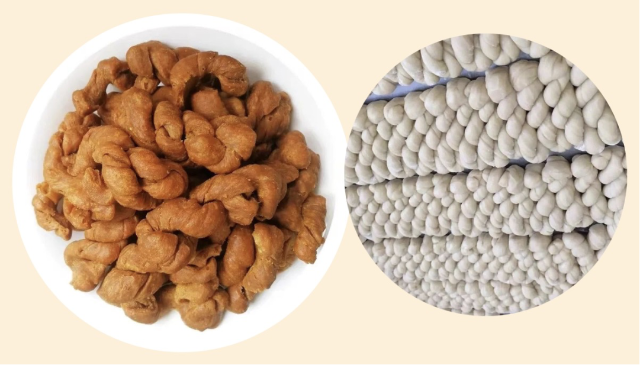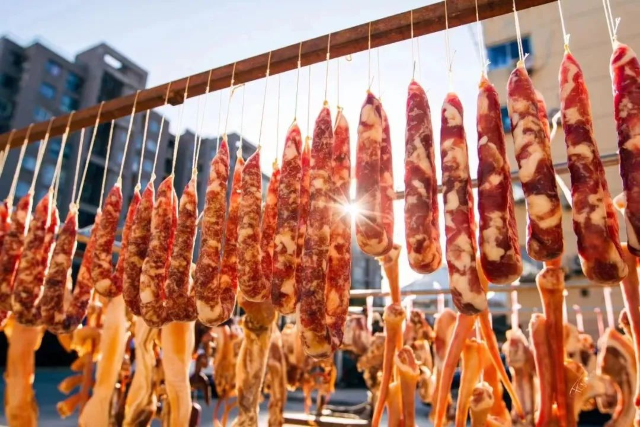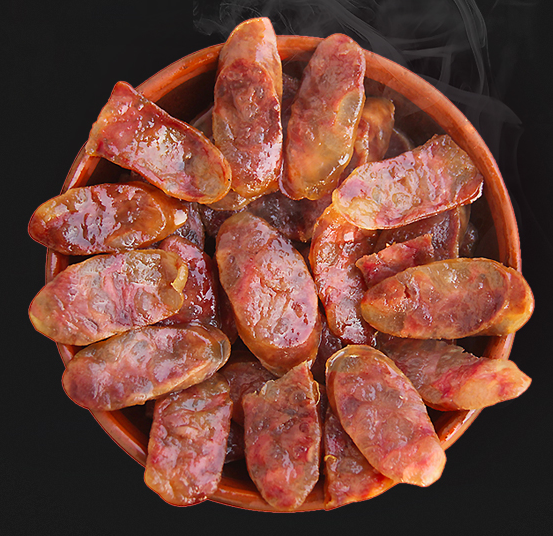| Speciality |
| updated: 2024-07-02 views: font-size:【big middle small】 |
1. Jianhu Oufenyuan (sweet dumplings made of lotus root powder) Coated with lotus root powder, Oufenyuan is staffed with crushed pine nut, sunflower seed, walnut and preserved kumquat plus sweet osmanthus, sugar and pork lard, which gives you a favorable and chewy taste, a pigeon-egg-like look and a brownish red color. Blanching is the most exquisite one among the 4 procedures including material preparing, staffing making, blanching and soup base making. Firstly, materials like fruits, pork lard, sugar, sesame seasoning with sweet osmanthus, almond, walnut, pine nut and kumquat are made into ball-like staffing then put the staffing into a tea tray loaded with lotus root powder and roll them gently and evenly in the lotus root powder lastly blanch the sweet dumpling in boiling water with a strainer. The procedures should be repeated 5 to 6 times. Oufenyuan matches well with sweet osmanthus. If you spoon up 2 to 3 sweet dumplings and some soup with sweet osmanthus, you will be rewarded the delight of osmanthus smell and flavor. High-quality oufenyuan appears agate-colored and semi-transparent. With a bite, you can feel the chewy wrapper in a sweet but fresh taste and the delicious staffing with rich aroma with osmanthus. 2. Funing slice cake Funing slice cake, also known as jade slice cake, is a traditional dessert of Funing County, Yancheng. White as snow, soft as cloud, and sweet as honey, the cake can be eaten in both rolls and slices.Ittastes sweet and soft, delicious and nutritiousfor people of all ages. The cake ismainly made of glutinous rice flour. It is said that EmperorQianlong once passed by Funing on his way to the south region of the Yangtze River. One day, the emperor got slightly hungry when he travelled incognito.Just then he came across a child who was eating a cake, so he ate the cake together. The emperor found this cake white as snow, soft as cloud, with sweet and soft taste,and hence named it jade slice cake. 3. Dazong Lake Hairy Crab Dazong lake is one of the main sources for China’s hairy crab. The Dazong lake hairy crab enjoys a high reputation and attracts diners all over the world. It is renowned as kung fu crab because of its large size and physical strength. It is understood that in the 7th year of Emperor Qianlong in Qing Dynasty (1742 AD), the Annals of Yancheng County recorded that Yancheng has shrimps in spring, crabs in autumn, both of which are from the lake of Xixiang and taste better than those from other places. The above “lake” refers to Dazong lake. There are verses saying “ In early autumn full of scent of chrysanthemum and osmanthus, people in Huai-yang region always praise the taste of crabs”. Dazong lake hairy crab is not only delicious, but also has high nutritive value. Every 100 grams of edible part has 14 grams of protein, similar to pig, lamb, yellow croaker, crucian, and 5.9 grams of fat, 7 grams of carbohydrates, lower than general fish and chicken. In addition to rich in calcium, crab shells also contain astaxanthin, astacin and so on. 4. Qinnan buffalo meat Qinnan buffalo meat, originating from Qinnan town of Yancheng, Jiangsu, is famous for its tender meat and unique taste. The quality of the local buffalo is selected and cooked with traditional cooking and secret recipes to highlight the freshness and taste of the meat. The Qinnan buffalo meat has a history of more than 100 years. It’s said that during the reign of Emperor Guangxu in Qing Dynasty, the Hui people of Ha’s family migrated to Qinnan and made a living at buffalo slaughtering and meat processing. Then the processing method were gradually spread locally. What is the best thing about the Qinnan buffalo meat? That’s aroma! Its aroma is deeply rooted in the bone and the aftertaste lingers in the mouth. 5. Dongtai orange peel wine (Chenpi wine) Dongtai orange peel wine is said to originate from the medicinal liquor made by Fan Zhongyan of Northern Song Dynasty, and was firstly brewed in Qing Dynasty. The orange peel wine was named Chenpou (jar) wine since it was stored in a jar after brewing. Chenpi is homophonic to Chenpou, and used in brewing as well, so it is also called Chenpi wine (orange peel wine). The orange peel wine has an orange color and soft taste, henceforth becoming popular among the people and known far and wide. 6. Yangma chrysanthemum Yangma chrysanthemum is a famous specialty. Yangma Town is known as the “hometown of Chinese medicinal materials”, and a large number of medicinal chrysanthemums are planted here. Yanma chrysanthemum not only has the effect of removing liver-fire for improving eyesight and refreshing the mind, but also attracts a large number of tourists. The chrysanthemum tea has a yellow and green color, a clear and sweet taste, and a rich and lasting aroma. The taste remains strong and the aroma still linger for a long time after several brews. 7. Dongtai mud snail Dongtai mud snail is different from those in other places, featuring by long head, yellow body and thick fat. It is influential in Jiangsu, Zhejiang and Shanghai. The mud snail, preserved by wine and salt, is crystal clear, and delicious and tender in taste with roe out of the shell. The drunk mud snail can be kept for a long time and an ideal companion to meals. 8. Wuyou fried dough twist Wuyou fried dough twist is a traditional snack with a long history. It contains ingredients like high-quality flour, white sugar and vegetable oil. Through low-temperature frying, it is sweet and crisp in taste, red and bright in color. You may feel it sweet and oily but not greasy. Wuyou fried dough twist, small and exquisite, looks like a spiral of two dragons. It is known for its aroma, sweetness and crispiness. Because of its different characteristics from ordinary refreshments, it has never been abandoned by diners for hundreds of years. 9. Binhai sausage As one of the traditional and famous food in Yanfu area, Binhai sausage has a long history. It is made of high-quality pork leg by natural drying, with traditional preparation combined with modern scientific methods. Rich in nutrients, Binhai sausage tastes mellow, distinctive and moderately salty. |
